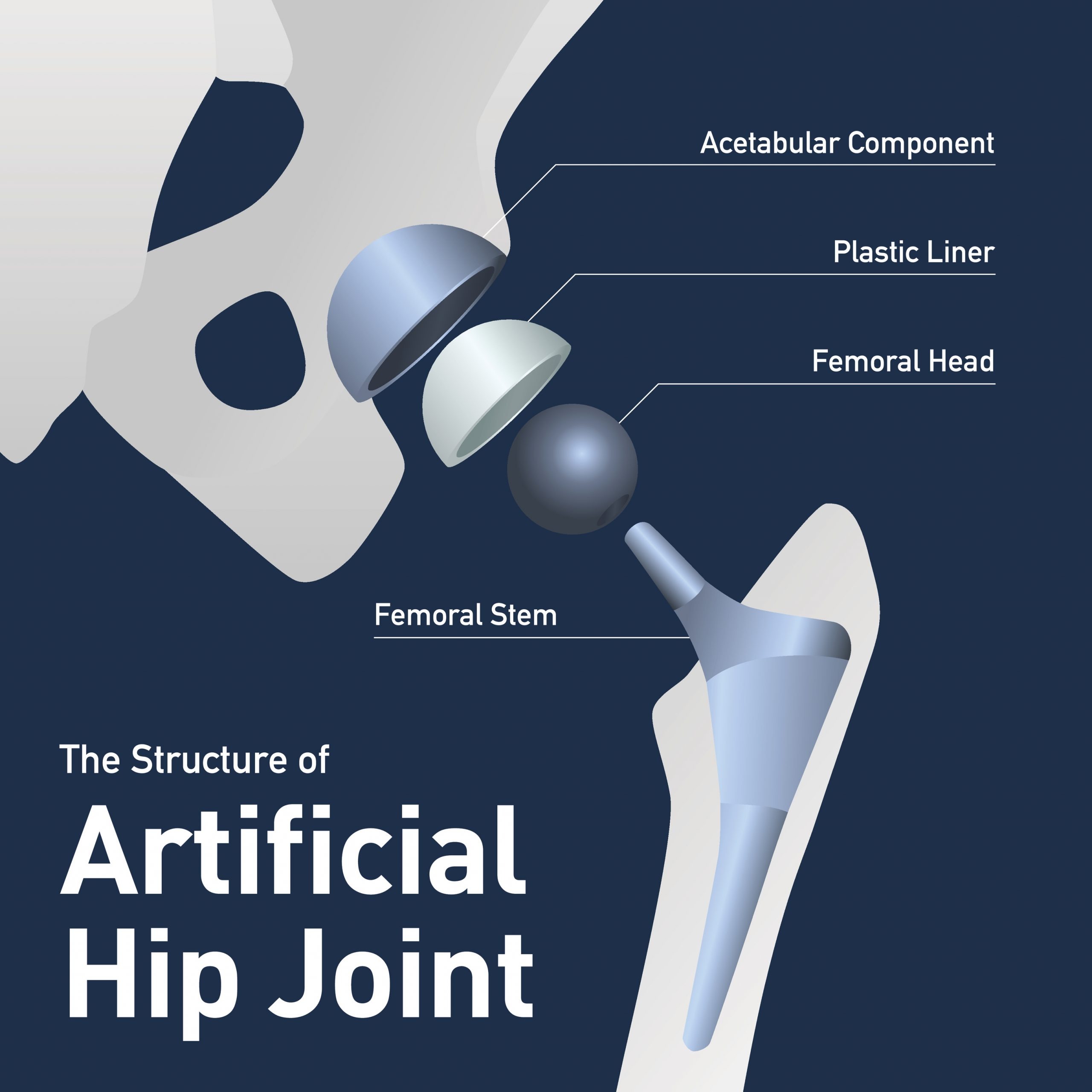- Conditions
- Procedures
- Patient care
- Why choose us
- Our Doctors
- Contact
What is a Total Hip Replacement?

Total hip replacement surgery overview
In total hip replacement surgery, surgeons will access the hip and remove the primary components of a damaged hip joint, specifically the ball and socket, replacing them with artificial implants. The goal of the procedure is to relieve pain and improve range of motion for patients dealing with chronic issues such as arthritis or hip fractures.
Whether you are undergoing a hip procedure or are exploring potential treatment options, this article can help you learn more about what to expect. At USA Spine Care, we believe patient education is an essential part of the treatment process and are here to help answer questions you have about your journey toward relief.
Who can benefit from a total hip replacement?
The most common reason for patients to undergo a total hip replacement procedure is due to arthritis of the hip. This condition, including age-related osteoarthritis and the autoimmune condition rheumatoid arthritis, can cause extensive damage to the hip joint. The hip joint consists of the upper femur, or ball of the hip, and the acetabulum, or hip socket, in the pelvis.
Arthritis is inflammation of the hip that occurs when the protective layer of cartilage wears down due to age or becomes damaged due to an immune response. Over time, this can cause bone-on-bone contact that causes the hip joint to become painful and range-of-motion to become limited.
In many cases, hip surgery is not required for arthritis patients, with conservative treatments and lifestyle adjustments often being effective for symptom management. Patients may be referred to surgeons for the following reasons:
- Hip pain is severely disruptive to quality of life
- Mobility is limited due to decreased range of motion and pain
- Pain persists when at rest or during the night
- Conservative treatments have been exhausted without bringing adequate relief from symptoms
Typical steps for total hip replacement procedures
Once a surgeon has consulted with the patient and performed an evaluation to determine if they are a good potential candidate for surgery, a total hip replacement procedure will typically consist of the following steps:
- Accessing the hip
- Using precision techniques to remove the very top of the upper femur and replacing it with a prosthesis
- Removing damaged tissue from the socket and replacing it with a corresponding implant and spacer
- Resetting the hip and any supporting soft tissue
- The surgeon will close the surgical site
Total hip replacement procedures generally take one to two hours, but can vary from patient to patient. With the help of minimally invasive techniques and advanced surgical technology, this type of surgery can be performed on an outpatient basis which offers the opportunity to avoid a lengthy hospital stay. Patients should expect to undergo physical therapy and rehabilitation in order to help the healing process, rebuild supporting muscles and increase function in the new hip joint.
Cost of total hip replacement surgery
Total hip replacement cost will vary according to a range of factors. This includes the extent and location of the procedure, the type of implant and the patient’s insurance carrier. Patients should be aware that Medicare covers total hip replacement if deemed a necessary part of treatment. USA Spine Care works with most private health insurances, Medicare, workers’ compensation claims and personal injury cases.
Learn more about hip pain relief
For more information about treatments for hip injuries and conditions that can get you back to an active lifestyle, reach out to USA Spine Care today. Our dedicated team can help you create the personalized treatment plan that works for you.
Call toll free 1-866-249-1627 to speak with a patient care representative.
